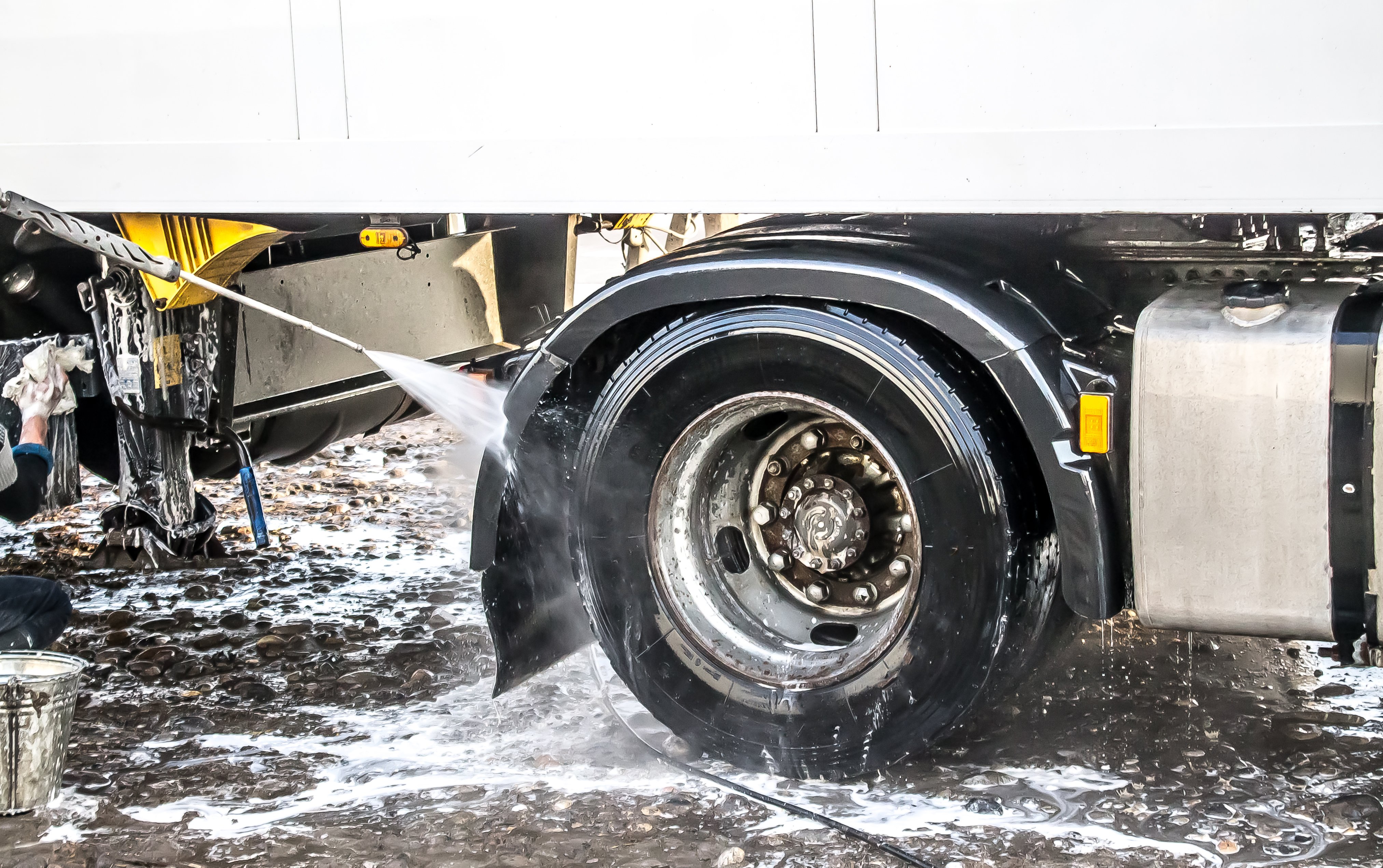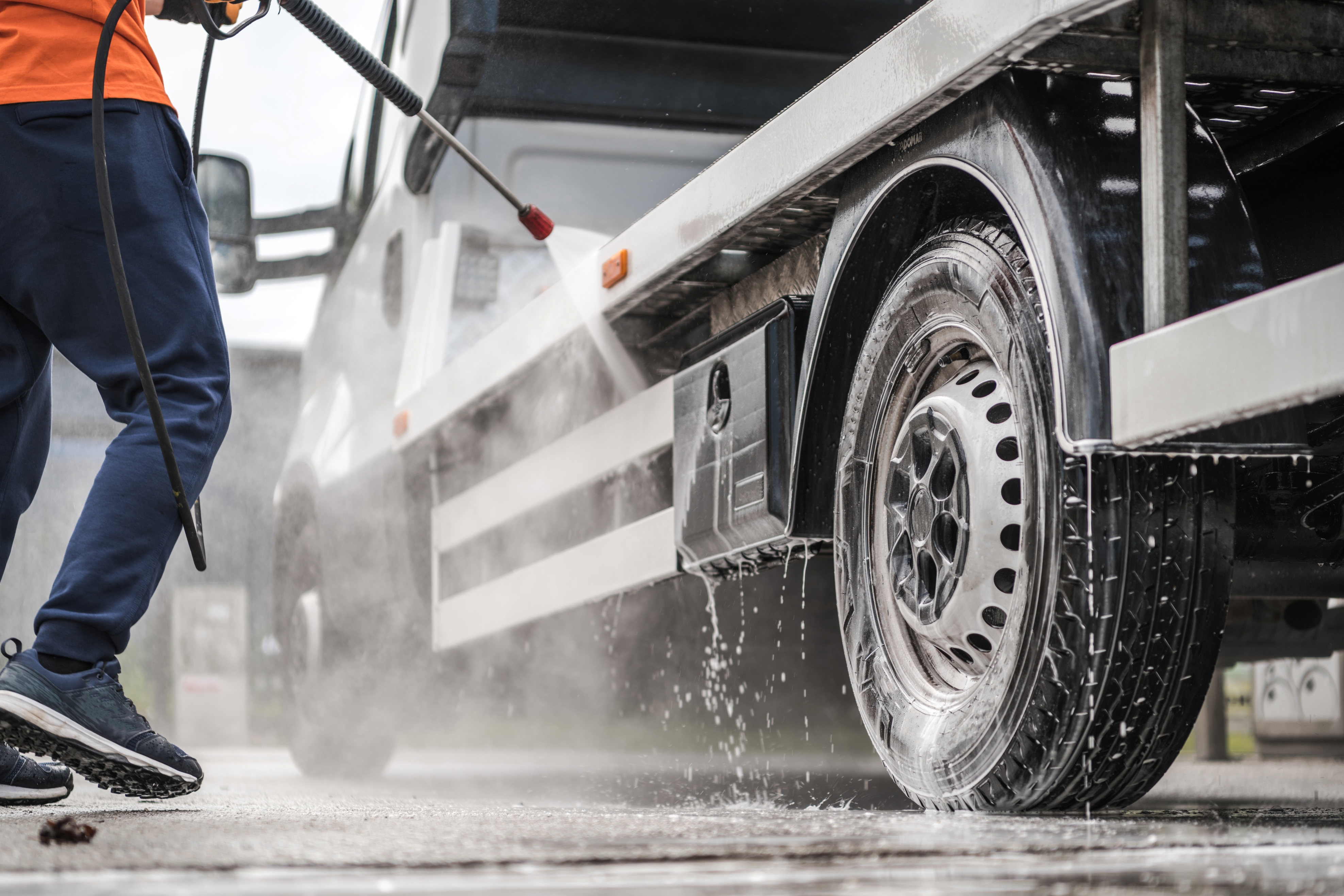
Miranda Blake
Як знайти найближчу автомийку для вантажівок
Створено: 23.10.2024
•
Оновлено: 01.11.2024
Незалежно від того, чи перевозите ви вантажі через міжнародні кордони, чи керуєте автопарком важких вантажівок, забезпечення ретельного очищення та технічного обслуговування ваших транспортних засобів може мати значний вплив на їхню продуктивність, довговічність та загальну ефективність роботи. На щастя, легко знайти надійну та зручну автомийку поблизу вашого місцезнаходження - читайте далі, щоб дізнатися, як це зробити.
Що включає в себе мийка вантажівок?
Коли справа доходить до миття транспортних засобів, вантажівки потребують спеціальних засобів та обладнання, які б відповідали їхнім унікальним вимогам.
Розташування та доступність
Автомийки для вантажівок стратегічно розташовані вздовж основних автомагістралей та міждержавних з'їздів, забезпечуючи легкий доступ і мінімальний затор для потоку великовантажних транспортних засобів. Таке розміщення дозволяє водіям далекобійників швидко та зручно дістатися до необхідних мийних послуг, не витрачаючи час на пересування перевантаженими міськими вулицями.
Вимоги до обладнання та приміщень
Оскільки вантажівки потребують більш надійної та потужної техніки для боротьби з брудом, жиром і дорожнім сміттям, що накопичуються на їхніх широких поверхнях, мийки зазвичай мають більші відсіки, вищий кліренс і спеціальне обладнання, включаючи мийки високого тиску та щітки з великим радіусом дії.
Споживання ресурсів та витрати
Миття вантажівок, як правило, вимагає більше води та електроенергії через великі розміри та об'єм транспортних засобів, а також необхідність більш інтенсивних процедур очищення. Таке підвищене використання ресурсів призводить до вищих операційних витрат, які потім відображаються на ціні.
Пропозиції послуг та спеціалізація
Мийка для вантажівок, як правило, зосереджується на комплексному зовнішньому очищенні, включаючи спеціалізовані послуги, такі як знежирення двигуна і миття бризковиків, щоб задовольнити унікальні потреби і проблеми, пов'язані з підтриманням чистоти важких комерційних транспортних засобів.

Навігація на мийці для вантажівок за допомогою SNAP
Пошук відповідного об'єкта для ваших потреб може бути непростим завданням. Саме тут SNAP, постачальник інтегрованих послуг для автотранспортної галузі, вступає в гру, щоб спростити вашу подорож.
Розгалужена мережа мийок для вантажівок
Наша мережа охоплює всю Європу і налічує понад 230 пунктів, які відповідають потребам операторів комерційних транспортних засобів. Вони стратегічно розташовані вздовж основних автомагістралей і транспортних вузлів, щоб водії могли легко отримати доступ до необхідних послуг з прибирання, не порушуючи свій графік або маршрути.
Погляньте на нашу [SNAP-мапу] (https://snapacc.com/map/) і дізнайтеся, як знайти заклади поблизу вас.
Безшовна інтеграція
SNAP Account інтегрується з мережею автомийок, дозволяючи водіям та операторам автопарків зручно оплачувати послуги за допомогою єдиного захищеного облікового запису. Це усуває потребу в готівці або декількох способах оплати, спрощуючи процес миття та надаючи комплексне рішення для управління витратами автопарку.
Індивідуальні рішення для миття вантажівок
Від миття під високим тиском до спеціалізованого миття ходової частини та знежирення двигуна - мийки для вантажівок SNAP оснащені всім необхідним обладнанням та досвідом, щоб забезпечити ретельне та ефективне обслуговування.
Безпечна та доступна парковка в депо
На додаток до наших послуг з миття вантажівок, ми також надаємо мережу безпечних і доступних паркінгів Depot по всій Європі. Ці спеціальні паркувальні майданчики, доступні виключно для власників рахунків SNAP, пропонують посилені функції безпеки та зручність попереднього бронювання паркувальних місць через [intruck] (https://intruckapp.com/), наш мобільний додаток. Це дає водіям впевненість у тому, що їхні транспортні засоби знаходяться в безпеці та доступності.
Оптимізоване управління автопарком за допомогою SNAP
Інтегруючи наш повний набір послуг, оператори автопарків можуть оптимізувати свої операції та досягти більшої ефективності. Від безперебійного миття вантажівок і безпечного паркування до управління паливом і платежів через Дартфордський перехрестя - наші рішення дають змогу керівникам автопарків зосередитися на своїх основних бізнес-завданнях, одночасно максимально використовуючи можливості технологій для оптимізації процесів.
Підвищіть продуктивність вашого автопарку за допомогою SNAP
Підтримання чистоти та справності ваших комерційних транспортних засобів є критично важливим аспектом забезпечення операційної досконалості. Використовуючи розгалужену мережу спеціалізованих об'єктів SNAP, ви можете підвищити продуктивність і довговічність вашого автопарку, спростивши при цьому загальне управління транспортними операціями.
Наші інтегровані послуги - це комплексне рішення, що відповідає унікальним потребам галузі комерційних перевезень. Ми даємо вам змогу зосередитися на найважливішому - безпечній та ефективній доставці вантажу, мінімізуючи клопоти та максимізуючи прибутковість бізнесу.
Тож, коли ви вирушаєте в дорогу, нехай SNAP стане вашим надійним партнером у збереженні первозданного стану ваших автомобілів. [Підпишіться безкоштовно вже сьогодні!] (https://snapacc.com/sign-up/)



